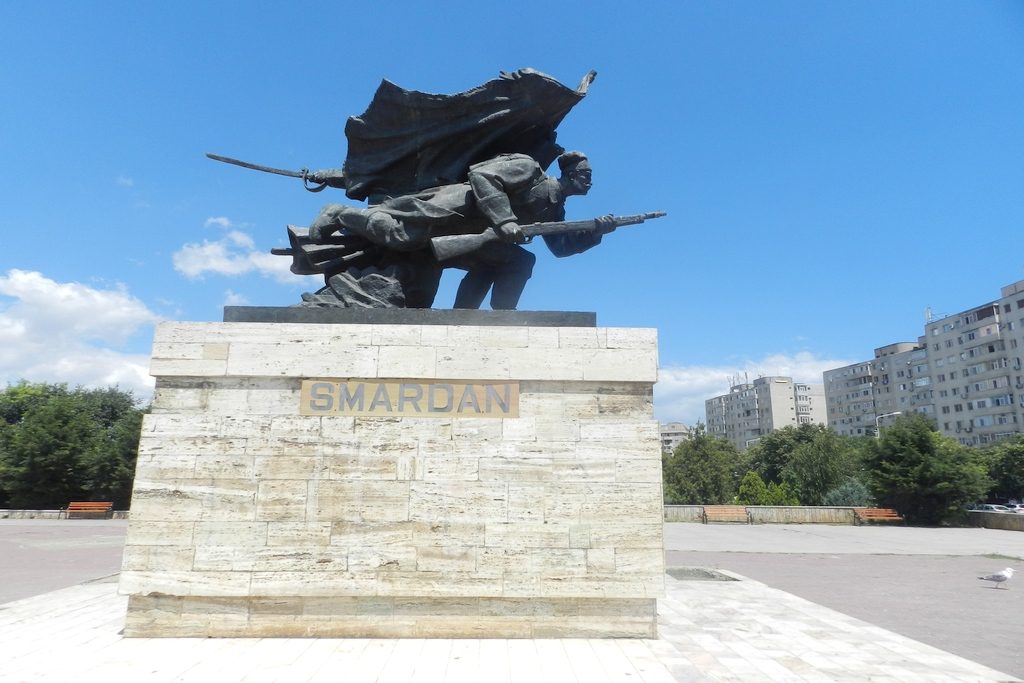

Monument dedicated to the heroes from the War of Independence, located on the esplanade of the House of Culture is elevated on a large mosaic platter (60x60m) with marble boards.
The bronze statuary group represents one dorobanţ (infantry soldier) in attack and an officer with the flag in one hand and with the sword in the other hand, urging the soldier to fight. On top of the pedestal, in rectangular form, are engraved the names of localities Plevna, Griviţa, Rahova and Smârdan.
The monument is the work of the sculptor Marius Butunoiu and was placed here in 1985.
The Romanian War of Independence is the name used in the Romanian historiography for the participation of the United Principalities to the Russo-Turkish War during the years 1877 – 1878. After this war, Romania has achieved its independence from the Ottoman Empire by the Treaty of Peace between the Russian Empire and the Ottoman Empire which was signed at San Stefano on 3 March 1878.
During the peace conference from Berlin in 1878 it was decided that Russia should recognize the independence of Romania, should surrender the territories of Dobrudja and the Danube Delta, including Constanţa harbour, and the small Island of Serpents. Instead, Russia took over the counties from southern Bessarabia (Cahul, Ismail, Bolgrad), which reentered within Moldavia after the Crimean War through the provisions of the Treaty from Paris in 1856. Prince Carol I was deeply dissatisfied with the unfavorable turn of the negotiations. Otto von Bismarck managed to persuade the prince to accept this arrangement, offering new opportunities to Romania from economic point of view, thanks to the access to the Black Sea and to the control over the traffic on the Danube
Marius Butunoiu (b. 22 October 1919, Turtucaia – d. 23 June 1999) was a Romanian sculptor.
He became officer within the sapper corps and, graduating the high school with the specialty of sculptor master, has been chief of the Army Fine Arts Studio until his discharge, in 1977.
Is author of over 30 monuments in bronze, marble and stone. He was preoccupied and inspired mainly by historical personalities (Burebista, Decebal, Traian Basarab I, Mircea the Elder, Bogdan I, Vlad the Impaler, Stephen the Great, John the Terrible, Michael the Brave, Dimitrie Cantemir, Aleksandr Suvorov, Alexandru Ioan Cuza and others).
Some monuments designed by him during 1961 and dedicated to the Romanian soldier were located including in Hungary, and in towns released by the Romanian army during the World War II (Miskolc, Nyíregyháza and Hajduboszormeny), but the best known is the Monument of National Heroes, designed during 1956-1957, together with Zoe Băicoianu, Ion Dãmãceanu and T.N. Ionescu and located in front of the National Defence University from Bucharest.
